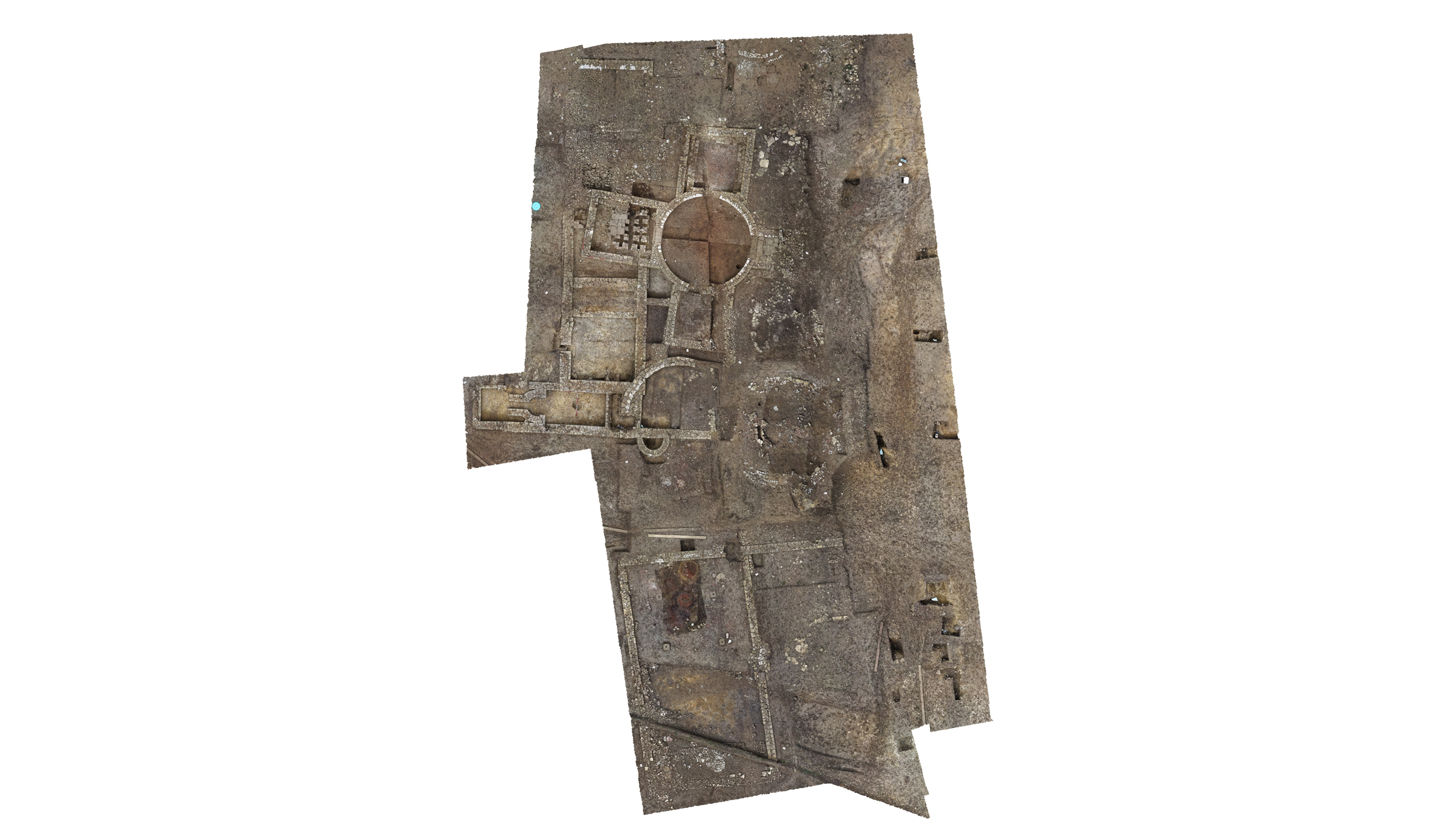Vandals sack Roman-era estate and bathhouse just discovered in UK
It's the "most important Roman discovery" in the last decade.

Shortly after archaeologists unearthed a large Roman-era estate in the community of Eastfield, in the United Kingdom, vandals trespassed and damaged the ancient site, news sources report.
According to archaeologists at Historic England, the finding is "easily the most important Roman discovery of the last decade," The Guardian reported. News of its stateliness likely attracted the vandals, who brought metal detectors and trespassed on the site on the night of April 14. It's unclear if anything was taken, but parts of the fencing and land were damaged, local police said, as reported by the BBC.
"We are aware of a number of incidences of illegal activity at the site of the newly-discovered Roman buildings at Eastfield over the past week," Keith Emerick, inspector of ancient monuments at Historic England, told the BBC. "As the archaeological potential of the area has been publicly known for some time, it is a hotspot for illegal metal detecting, also known as 'nighthawking.'"
Related: Photos: Major Roman settlement discovered in North Yorkshire
Like many archaeological discoveries in the United Kingdom, the estate was found ahead of a construction project. Before a new housing development could be built by Keepmoat Homes in the county of North Yorkshire, archaeologists surveyed the area; they were stunned to discover the well-preserved remains of a large complex, The Guardian reported.
The complex had a cylindrical tower surrounded by rectangular rooms and some freestanding buildings, including a bathhouse. The entire site is about the size of two tennis courts.

"We've spoken to a number of leading Roman academics about it, and we're all trying to find a comparable site and we are struggling," Emerick told the BBC. "So in that sense, it is really significant. It's really exciting as well."
Get the world’s most fascinating discoveries delivered straight to your inbox.
It's possible that after the landowner had the estate built, it became a religious sanctuary or even a gentleman's club of sorts, archaeologists told The Guardian. Preliminary analyses revealed that the estate was "designed by the highest-quality architects in northern Europe in the era and constructed by the finest craftsmen," Karl Battersby, of the North Yorkshire County Council, told The Guardian.

North Yorkshire is a hotspot of Roman artifacts, as well as prehistoric and Iron Age remains. But the newfound site is "far more than we ever dreamed of discovering," Emerick told The Guardian.
Keepmoat Homes is now planning to conserve the remains under an open public space. Moreover, Historic England plans to designate it as a national monument, Emerick told the BBC.
In light of the recent vandalism, Keepmoat Homes said it would increase security, the BBC reported.
"Sadly, heritage crime can cause huge damage to assets of great historical interest," a North Yorkshire Police spokesperson told the BBC. "Indeed, the cost to communities of heritage crime is often immeasurable, resulting in the loss of artifacts to future generations."
Live Science reached out to Historic England, but it declined to comment because it is now pre-election season in parts of the United Kingdom. "During the pre-election period we enter a time of restricted communications so as not to cause any potential disruption to election campaigns," a spokeswoman said.
Originally published on Live Science.

Laura is the managing editor at Live Science. She also runs the archaeology section and the Life's Little Mysteries series. Her work has appeared in The New York Times, Scholastic, Popular Science and Spectrum, a site on autism research. She has won multiple awards from the Society of Professional Journalists and the Washington Newspaper Publishers Association for her reporting at a weekly newspaper near Seattle. Laura holds a bachelor's degree in English literature and psychology from Washington University in St. Louis and a master's degree in science writing from NYU.


